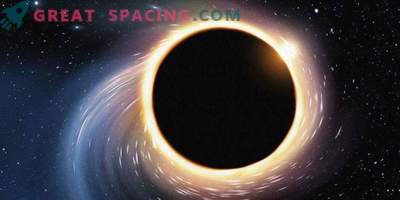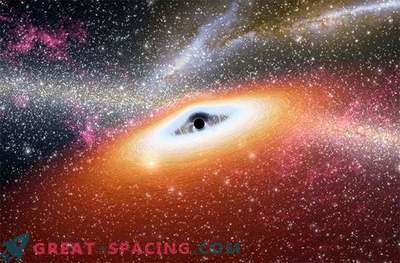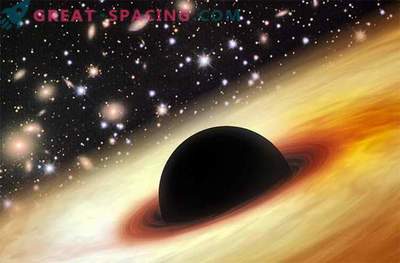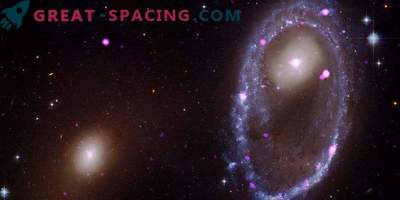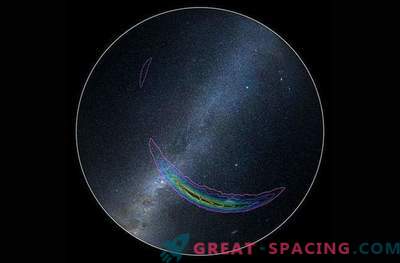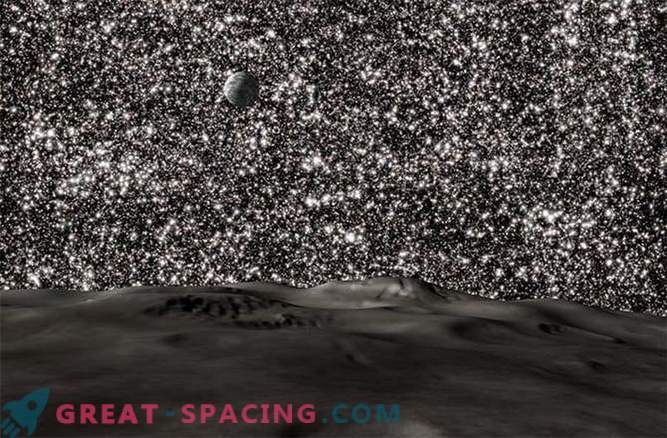
The artistic image of the night sky - it looks like this from the surface of a planet located in the center of a superdense galaxy. More than a million stars are visible to the observer, in contrast to the several thousand that can be observed from Earth.
The superdense galaxies of our Universe were discovered by two students, thanks to years of working with these archives. Due to the discovery of the phenomenon of galactic gas clusters, these dwarfs are considered the most dense formations in our Universe. They owe their discovery to the hardware-software search complex SZS (superdense stellar systems).
The formation of a superdense galaxy - the consequences of stellar cannibalism?
Calling these galaxies just dense will be an obvious understatement. The first of these, called M59-UCD3, is 200 times smaller than our galaxy, but has a density that is 10,000 times greater than the density of the stars surrounding our solar system. The density of the second galaxy (M59-UCD3) is even greater: more than 1,000,000 times the density of the stars adjacent to our Sun.
A hypothetical observer standing on the surface of one of these planets would see the night sky filled with huge bright stars (as the artist depicted above).
Giant black holes are hidden in strange little galaxies
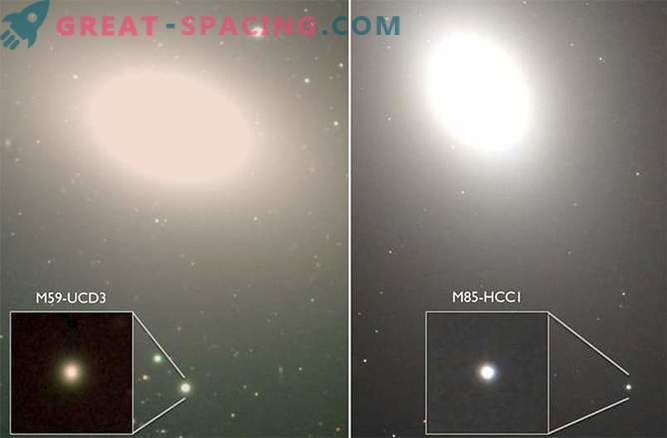
Both superdense galaxies were discovered in the orbits of larger “parent” galaxies. They are considered remnants of the once normal galaxies. In the process of absorption, the less dense outer layers of their surface disappeared, only the denser nuclei remained.
“Ultra-dense star systems, such as these, are easy to find, provided you know what you are looking for,” said Richard Vaugh, a student at San Jose State University. “Nevertheless, nobody simply paid attention to them for decades. No one could suggest the existence of such objects. They were hiding in plain sight. ” “We found one of their SZS - objects only by luck. After that, it became clear that there must be others, and we set out to find them. ”
Richard Waugh and his fellow student Michael Sandoval studied the scan data of Sloan Digital Sky, Subaru and Hubble telescopes, and Goodmane's spectrograph. This allowed them to open two SZS in the orbits of larger and massive galaxies. The close proximity to larger galaxies will help to figure out what is needed in order for the ESS to become so dense.
The “Grave of Tombs” star is gradually turning our galaxy into a black hole?
“One of the best clues is that some ESSs may turn into supermassive black holes,” said Sadoval. “This suggests that initially SZS were much larger than normal galaxies. This looks plausible, since the SZS are located close to the massive galaxies that were able to “sweep” them. The presence of heavy elements (for example, iron), detected by spectroscopic analysis, is a characteristic feature of large galaxies, which are factories of heavy elements. These findings were published in the Astrophysical Journal.
Thanks to the dedicated work of Sandoval, Vaud, and their like-minded people, despite the lack of access to astronomical objects, using only archival data, it was possible to detect LES.
Discovery of mysterious galaxies - a new stage in the knowledge of space
“Given the circumstances of the discovery of SZS and using the subsequent spectroscopic data, we get a great way to involve undergraduates in astronomical research. Especially in pedagogical universities, such as San Jose. This is especially important in the absence of large research budgets and our own astronomical objects, ”said the tutor and co-author A. Romanovsky.
The next stage of research is the search for new SZS objects in order to find out how common they are in space.

